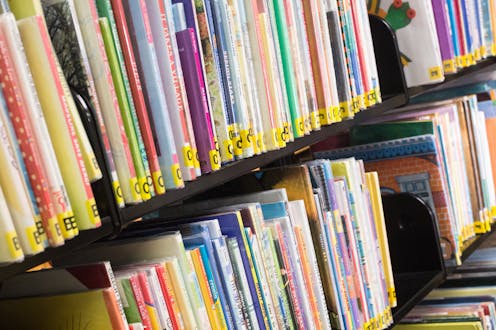why Indigenous students need bilingual teaching at school
- Written by Rikke Louise Bundgaard-Nielsen, Teaching Associate, The University of Melbourne

Last month, the federal government released the annual Closing the Gap data.
According to the report, 34.3% of Indigenous preschoolers were starting school developmentally on track, compared to almost 55% of non-Indigenous Australian students as of 2021.
About 68% of Indigenous people aged 20–24 years had attained Year 12 or equivalent as of 2021, with a target of 96% by 2031.
Speaking about the Closing the Gap report, Minister for Indigenous Australians Linda Burney noted her disappointment about the results.
The gap is not closing fast enough. I know many people are frustrated by the lack of progress.
But are these reports asking the right questions? Many Indigenous children who do not speak English at home struggle with English at school. This suggests some poor education outcomes may arise from cross-language difficulties.
Our new study investigated children speaking Kriol.
This is the largest Indigenous language after English in Australia. Kriol-speaking children make up the largest group of Indigenous kids with English as a second language.
What is Kriol?
Kriol is the result of contact in the 19th century between speakers of Indigenous languages and English, and many Kriol words come from English.
Kriol has been called “broken English”. But Kriol is neither “broken”, nor English. It is a separate language with its own grammar and vocabulary.
Recognition of the language barrier experienced by Kriol-speaking children has been delayed by two unfortunate assumptions. One is that Kriol is a dialect of Australian English or Aboriginal English, not a separate language.
The other assumption is Kriol is “highly variable” and speakers use many versions of Kriol – including some that are very similar to English. As a consequence, it has been assumed Kriol-speaking children won’t struggle to learn in English when they get to school.
Read more: Explainer: the largest language spoken exclusively in Australia – Kriol
Our research
Our research investigated children’s use of Kriol for the first time.
We spoke to 13 children between four and seven. The children were all students at Wugularr School (also called Beswick) in the Northern Territory. The community language in Wugularr is Kriol, but a range of traditional languages are also spoken.
Less than 1% of the population in Wugularr only speak English at home. Children first learn English when they start preschool.
Our findings
We used two game-like activities to test children’s knowledge of Kriol words and sounds.
In one activity we showed the children a picture of a familiar object (such as a door or an apple) accompanied by a recording in Kriol asking, “what’s this?”. The kids then spoke the word.
In the other “game”, we played recordings of Kriol words - some produced the right way, and some produced with an error. For example, “diger” for “tiger” and “abble” for “apple”. We then used a recorded Kriol prompt asking if the lady in the recording said the word the right or wrong way. (The students found this really hilarious – an adult making so many mistakes!)
These activities showed students had a good knowledge of the sounds of Kriol and the correct shape of words in Kriol, which are important pre-literacy skills. This showed they are ready to learn to read, just not in English.
This also demonstrated very substantial linguistic differences between English and Kriol. This means Kriol-speaking children are not speakers of English, and that they do not effortlessly “slide” into a version of Kriol that is “close enough” to pass for English as a consequence of formal schooling in English.
The need for bilingual education
Our research shows Kriol-speaking children face similar difficulties when they start school as children from other non-English speaking backgrounds.
In an ideal setting, students would be given a bilingual education. This means Indigenous children would be able to use their First Language knowledge and cultural knowledge as a foundation for learning.
Teaching assistant and linguist Hilda Ngalmi is a Wubuy/Nungubuyu woman from Numbulwar, where Kriol is widely spoken. She collaborated with us on the research. As she explains:
When I teach kids, I have to explain to them in Kriol first. Because that is the language they understand.
The need for bilingual education for children who speak traditional Indigenous languages has been debated for decades in Australia. Support has waxed and waned and today only a small number schools offer a genuine bilingual education.
However, where it does happen, it is having positive results.
For example, Yirrkala School in Northeastern Arnhem Land teaches students “both ways” in local language Yolngu Matha and English. In 2020, eight students became the first in their community to graduate Year 12, with university entry-level scores.
Not making the most of children’s First Language competence creates additional learning barriers for Indigenous children. If we really want to “close the gap”, our education system needs to support students to learn in a bilingual environment.
Read more: Why more schools need to teach bilingual education to Indigenous children
Authors: Rikke Louise Bundgaard-Nielsen, Teaching Associate, The University of Melbourne





